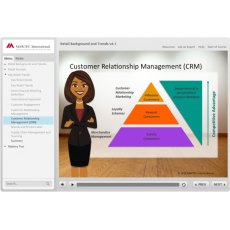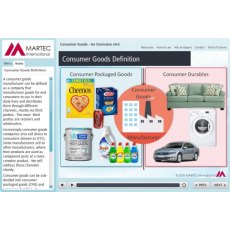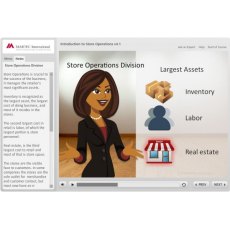Introduction to Retail Financials
Item: EL61
This course explores the main financial statements used by retail organizations and how retailers make their money. Scroll down for course objectives and detailed content. The NASBA version of this class is eligible for 1.2 NASBA CPE credits.

![]() In stock
In stock
Description
Retail Financials — Learn the Main Financial Statements in Retail
This course explores the main financial statements used by retail organizations and how retailers make their money.
Who Is It Suitable For?
This program is designed for:
- People who sell or market to retailers, especially IT suppliers.
- It will also benefit consumer goods manufacturers who sell directly to retailers and those who are involved in manufacturer Direct to consumer (DTC) operations.
- Those who market to retailers to get their content specified in retail products.
- And is also valuable as part of induction training for retail management trainees and for retail IT teams and others, such as Finance, HR and Supply Chain, who need to understand the retail business more fully.
Course Objectives
Upon completing this course, students will be able to:
- Explain the main retail financial statements
- Identify how retailers achieve their profits
- Highlight the major variables retailers can leverage to improve their profits
- Identify the difference between the retail and cost methods of accounting
- Determine the main elements that are impacted in a return on investment calculation.
Detailed Content
The detailed content includes:
- Retail profit model:
- Retail profit and loss account
- Average retail profit before tax
- Retail profit model
- Operating expenses
- Balance sheet:
- Ballance sheet essentials
- Current assets
- Fixed assets
- Liabilities
- Equity and retained profits
- Return on Net Assets
- Asset utilization
- Industry profitability drivers:
- Building retail sales and profitability
- Maximizing cash flow and profits
- Balancing gross margins, payment terms and inventory turns
- Retail and cost methods of accounting:
- Definitions
- Advantages and disadvantages of the retail method
- Advantages and disadvantages of the cost method
- Summary
- Mastery test
- Learners completing the mastery test and obtaining a 70% pass mark will also receive a mastery certificate upon completion.
Benefits of Studying This Program
Learners studying this program will gain familiarity with the retail industry faster, shortening their path to full productivity.
Customer Feedback
A survey of over 45 of our learners rated this class in response to 4 key questions as follows:
1. Has this course helped you achieve your personal goals?

2. Has this course helped you do your job better?

3. How likely would you be to recommend the course to a friend or colleague?

4. How would you rate the course overall?

Hours of Study
On average learners took 1.5 hours to study this module.
Resources Included
The class includes the following downloadable resources for printing and review:
- Module summary
- Retail and Cost Methods of Accounting
- Numbers that matter in retail white paper
Pre-Requisites Necessary
Learners without previous retail experience will benefit from studying the Retail Background and Trends module first.
After This Program
This program is a module from our Fundamentals of Retail training suite. The next logical program in developing learners’ knowledge is Analyzing Retail Key Performance Indicators.
Video
Please allow Cookies to view video content
Customer Reviews
































Share & Forward To A Friend
Share
Introduction to Retail Financials Course | Martec
Facebook Twitter Email Pinterest Telegram